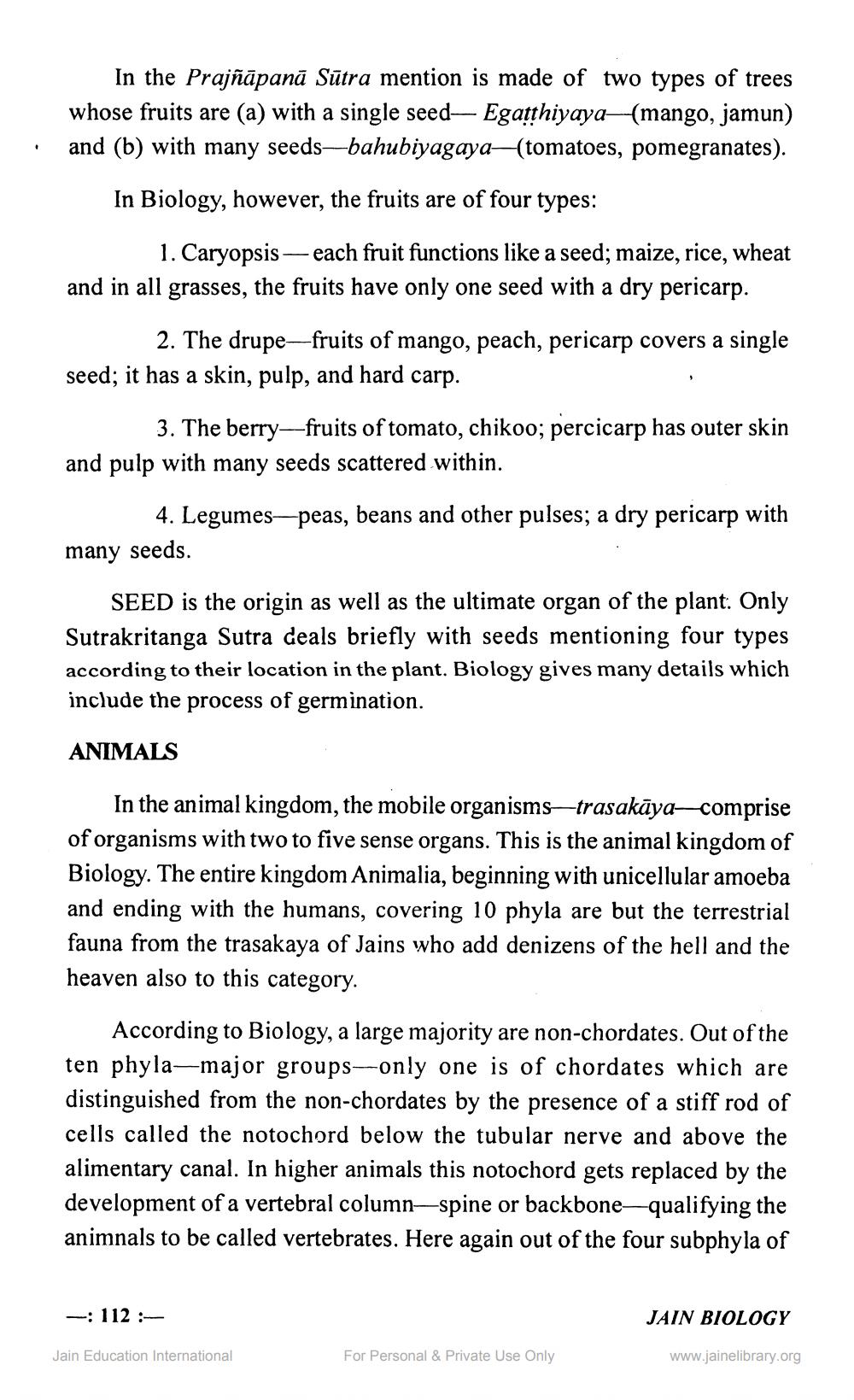________________
In the Prajñāpanā Sūtra mention is made of two types of trees whose fruits are (a) with a single seed— Egatthiyaya—(mango, jamun) · and (b) with many seeds—bahubiyagaya—(tomatoes, pomegranates).
In Biology, however, the fruits are of four types:
1. Caryopsis — each fruit functions like a seed; maize, rice, wheat and in all grasses, the fruits have only one seed with a dry pericarp.
2. The drupe-fruits of mango, peach, pericarp covers a single seed; it has a skin, pulp, and hard carp.
3. The berry-fruits of tomato, chikoo; percicarp has outer skin and pulp with many seeds scattered within.
4. Legumes—peas, beans and other pulses; a dry pericarp with many seeds.
SEED is the origin as well as the ultimate organ of the plant. Only Sutrakritanga Sutra deals briefly with seeds mentioning four types according to their location in the plant. Biology gives many details which include the process of germination.
ANIMALS
In the animal kingdom, the mobile organisms—trasakāya-comprise of organisms with two to five sense organs. This is the animal kingdom of Biology. The entire kingdom Animalia, beginning with unicellular amoeba and ending with the humans, covering 10 phyla are but the terrestrial fauna from the trasakaya of Jains who add denizens of the hell and the heaven also to this category.
According to Biology, a large majority are non-chordates. Out of the ten phyla-major groups-only one is of chordates which are distinguished from the non-chordates by the presence of a stiff rod of cells called the notochord below the tubular nerve and above the alimentary canal. In higher animals this notochord gets replaced by the development of a vertebral column—spine or backbone-qualifying the animnals to be called vertebrates. Here again out of the four subphyla of
-
112 :
JAIN BIOLOGY
Jain Education International
For Personal & Private Use Only
www.jainelibrary.org




